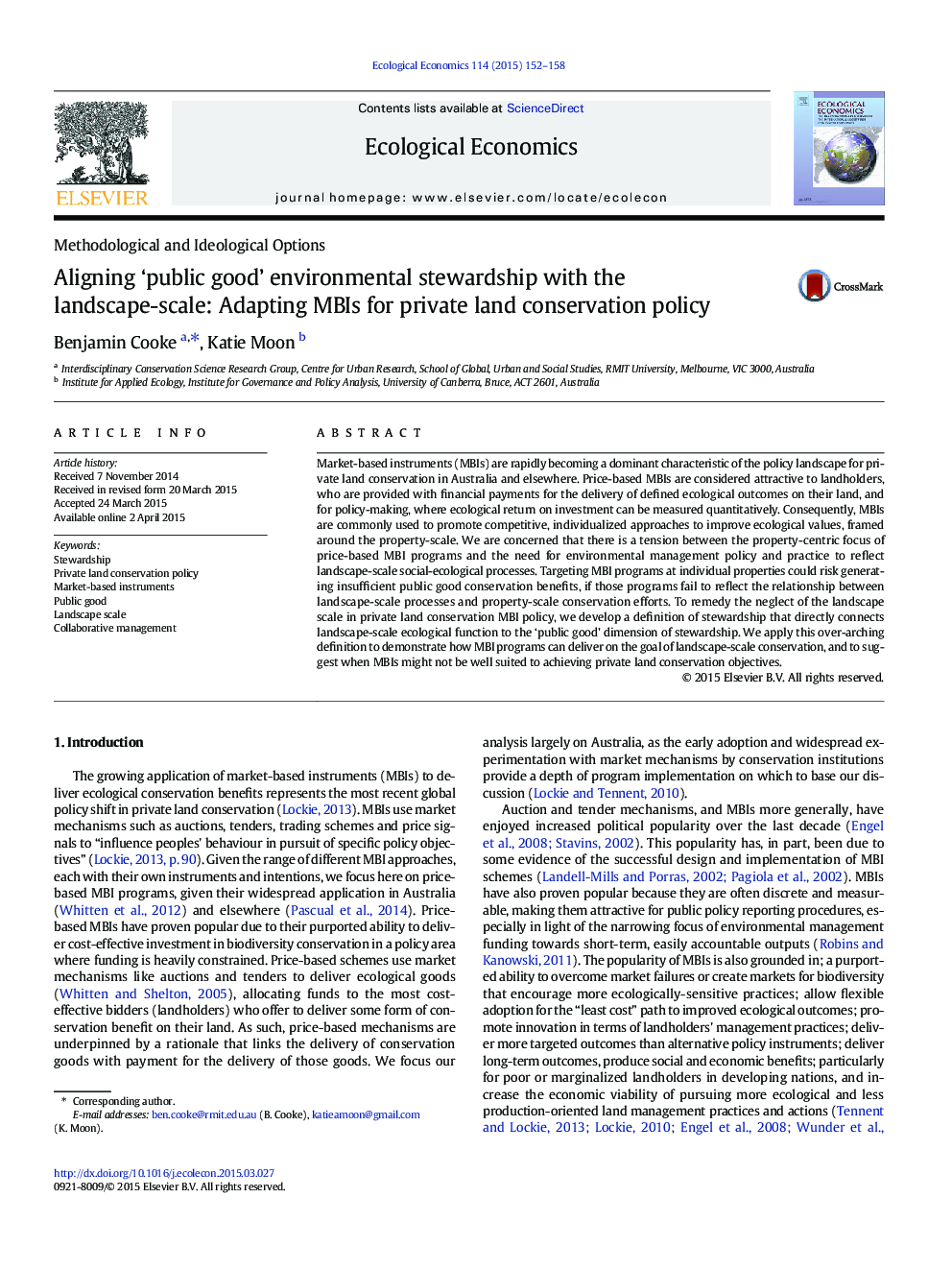| کد مقاله | کد نشریه | سال انتشار | مقاله انگلیسی | نسخه تمام متن |
|---|---|---|---|---|
| 5049340 | 1476365 | 2015 | 7 صفحه PDF | دانلود رایگان |

- MBIs for private land conservation must be attentive to landscape-scale ecological function.
- The environmental stewardship concept holds promise for aligning MBIs with the landscape scale.
- Environmental stewardship brings attention to cross-boundary and collaborative land management.
- Environmental stewardship shows that MBIs are not always suitable for private land conservation
Market-based instruments (MBIs) are rapidly becoming a dominant characteristic of the policy landscape for private land conservation in Australia and elsewhere. Price-based MBIs are considered attractive to landholders, who are provided with financial payments for the delivery of defined ecological outcomes on their land, and for policy-making, where ecological return on investment can be measured quantitatively. Consequently, MBIs are commonly used to promote competitive, individualized approaches to improve ecological values, framed around the property-scale. We are concerned that there is a tension between the property-centric focus of price-based MBI programs and the need for environmental management policy and practice to reflect landscape-scale social-ecological processes. Targeting MBI programs at individual properties could risk generating insufficient public good conservation benefits, if those programs fail to reflect the relationship between landscape-scale processes and property-scale conservation efforts. To remedy the neglect of the landscape scale in private land conservation MBI policy, we develop a definition of stewardship that directly connects landscape-scale ecological function to the 'public good' dimension of stewardship. We apply this over-arching definition to demonstrate how MBI programs can deliver on the goal of landscape-scale conservation, and to suggest when MBIs might not be well suited to achieving private land conservation objectives.
Journal: Ecological Economics - Volume 114, June 2015, Pages 152-158